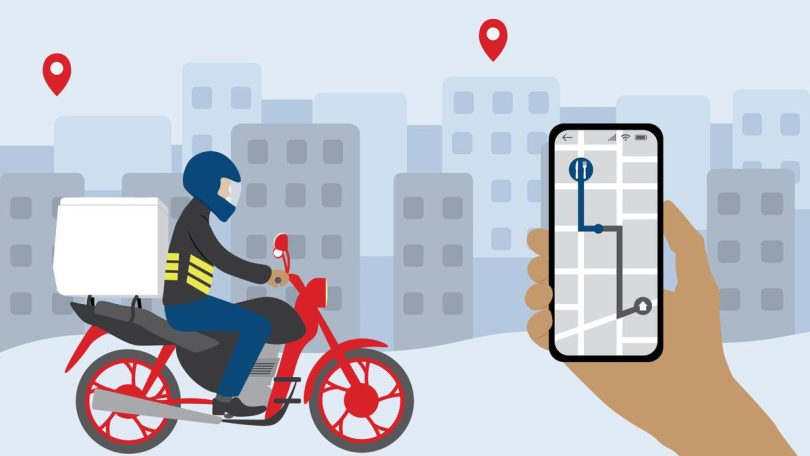[ad_1]

Making deliveries on time. Illustration of a food delivery worker riding a vehicle to drop a delivery
| Photo Credit: Marcela Vieira
A survey report on food delivery partners by the National Council of Applied Economic Research validates several common beliefs, such as workers being young graduates who work extended hours for better pay and independence. However, the study also reveals new insights: a sizable portion of them are sole breadwinners in their families and a notable share experienced a drop in income compared to their previous jobs. The findings further indicate a decline in their real income over time even as the share of income that they spent on fuel has risen, resulting in a double whammy
- A majority of them agreed that deliveries can be increased if they worked harder, while a similar share also said that this was not in their control due to traffic and restaurant delays
- A significant share of them spent a sizeable amount buying new phones and vehicles for the job
Profile of a food delivery partner
An overview of the average food delivery worker, encompassing their background and skill sets, according to the survey
- The typical food delivery worker is a 29-year-old male
- Nearly one-fourth (23.8%) of these workers are in their first job, and of this group, 88% are students
- Food delivery workers lack social security protection. Only 61.9% of delivery workers receive rations, 12.2% possess an Ayushman Bharat card, 7.1% are registered on the e-Shram portal, and 4% are enrolled in the Atal Pension Yojana
- These workers are considered informal labour, lacking employer-provided social welfare and job security, although some may have accident insurance
- Workers on long shifts average 10.8 hours, while those on short shifts work about 5.2 hours
- A third of the workers have college degrees, and 93% have at least completed 10th standard
- 43.7% of workers are the sole wage earners, and 68.9% are non-migrants who work in their hometowns
- On average, workers stay in their food delivery roles for about 14.1 months, though a third indicate that they have no plans to leave
- In terms of tenure, 28.1% have been working in such platforms for less than a year and 25.7% for 1-2 years, making them pandemic-era hires. Meanwhile, 24.7% started before the pandemic, having worked for over two years
- Food delivery workers work 27.8% more hours than the average urban young male and earn 59.6% more. However, after accounting for fuel expenses, this income advantage narrows to 5%
Incentives
Chart 1 | A look at the reasons given by workers for joining the food delivery platforms (% respondents)
Charts appear incomplete? Click to remove AMP mode
Basis of entry
Chart 2 | How did workers enter the food delivery platform? (% respondents)
Job requirements
To work for a food delivery service, a worker is required to own a two-wheeler and know how to use it, have a smartphone, and buy a kit that includes a T-shirt and bags
Old vs new job
Chart 3 | The chart contrasts different facets of employment in food delivery platforms with the prior jobs of those who work long shifts in food delivery
Income and expenditure
Examining the change in a food delivery worker’s income levels due to this new job
Chart 4 | % of long-shift workers who said their real income (new income minus previous job’s monthly income) increased/decreased/remained same
Chart 5 | Year-wise nominal and real monthly income of long-shift food delivery workers (in ₹ thousand)
Chart 6 | Year-wise share of fuel costs for long-shift food delivery workers as a share of their income
Chart 7 | Average monthly earnings, fuel costs, and monthly spending (excluding fuel) for long-shift platform workers
Perceptions about delivery
The charts show the share of respondents who said the following:
Chart 8 | The number of deliveries can be increased if a worker tries harder
Chart 9 | The number of deliveries a worker makes is not in their control
Chart 10 | The worker can improve their rating if they are polite to their customers
Chart 11 | The worker has to spend a lot of time waiting at a restaurant for an order
Methodology
NCAER conducted a phone survey involving 924 food delivery workers from a specific platform. The survey spanned 28 cities, covering Tier 1, 2, and 3 cities across all regions of India—North, South, East, and West. It included both active and inactive or former workers, who had employment durations ranging from less than a year to over two years, working either full-time or part-time.
This report, the first output of a three-part research programme undertaken by NCAER extensively explores the socio-economic implications of workers engaged in the food delivery platform industry, shedding light on their employment patterns, incomes, and work environments. Parts two and three of the research programme reports, to be released subsequently, will evaluate the socio-economic impact of food delivery platforms on restaurants, and their systemic impact on India’s economy and labour markets.
Also read: Gig Workers Bill: reading between the lines
Listen to our Data podcast | A discussion on Madras HC judgment: Wife can claim a share in husband’s property | Data Point podcast
[ad_2]
Source link








